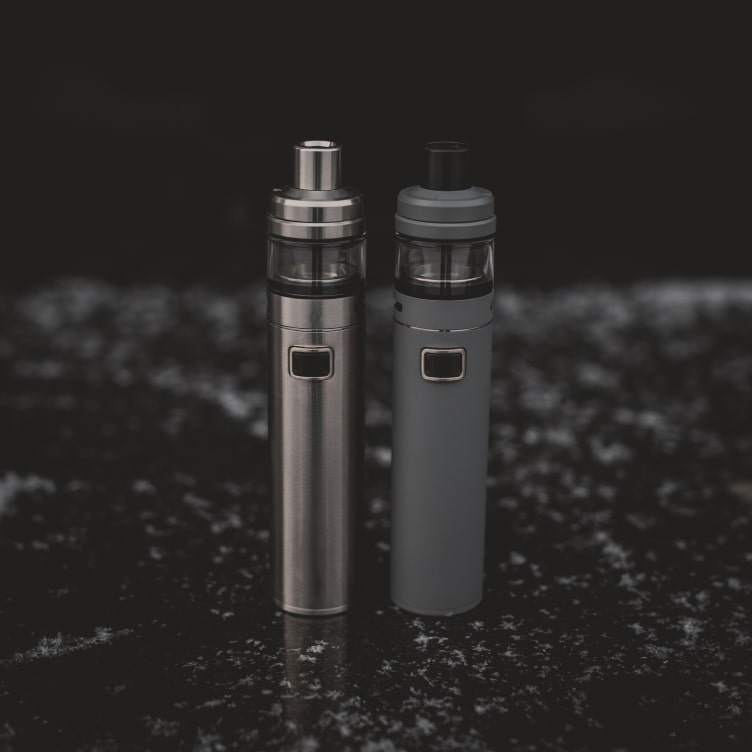Finding your vape a bit sticky at the end of the day?
It can be a nightmare when your tank starts leaking, and you begin to wonder if you need to replace it. Before you drop the cash on a new one, there are several things you should check! The most common causes can be traced to a broken seal, the coil fitting, or overfilling. We will look at all the probable causes and suggest how to fix them and how you can avoid them.
Broken seals and poor fitting seals.
Many vape kits and vape tanks come supplied with spare seals for a reason. Over time seals will perish or may break due to wear or over-tightening, causing your tank to leak. Top-fill and bottom-fill tanks will have a seal between the tank and cap. Over time, with constant re-filling and tightening of the cap, the seal will eventually wear out or even break.
How to fix: Simply replace the faulty seal.
Coils have seals fitted between the top and the base of the tank. These seals prevent e-liquid from leaking into the top chamber, through the air intake ports, or even into the battery chamber. Leakage will also occur if the seals are damaged through over-tightening your coil or if they aren't seated correctly because the coil isn't fitted tight enough.
How to fix: Ensure that your coil is tight and fitted correctly. Avoid over-tightening it. Some modern pods have simple push-fit coils. It is important to ensure that these coils are pushed in tightly, often with a slight click, to achieve a good seal and avoid leaking.
Incorrect or faulty coils
Coils are designed for different vaping styles and have different wattage and resistant ratings. Choosing the wrong coil for your style of vaping can result in too much e-liquid passing through the coil. This excess e-liquid, instead of being turned into vapour, may leak through the air intake ports, or worse, be sucked out of the drip tip into your mouth when you vape.
How to fix: Check your coil rating for your vaping style. For MTL vaping, you require a lower wattage and lower resistance coil. For DTL vaping, higher wattage and higher resistance coils are recommended.
Faulty coils
If your coil is faulty or nearing the end of its life, this can also cause an excess of e-liquid in the coil that isn't converted to vapour with similar effects to having the wrong coil.
How to fix: Replace your coil.
Overfilling
Overfilling is an obvious one. Putting too much e-liquid into your tank or pod can cause it to leak. Too much e-liquid can cause the coil to become flooded or for e-liquid to leak past seals when replacing the cap. Many tanks have recommended fill levels to prevent leakage and other problems caused by overfilling. The Aspire PockeX stick has a fill-level to avoid over-filling. If you over-fill with e-liquid, it will leak through the air chamber at the top of the tank.
How to fix: Don't overfill and follow the filling instructions.
Using the wrong e-liquid.
As with coils, it is also important to use the correct e-liquid for your vaping style and vape device. E-liquids have different VG and PG ratings which results in the liquid being thicker or thinner. A higher VG rating such as a 70VG/30PG means that the liquid is thicker and more suited to high powered devices and low Ohm (sub-Ohm) coils. If you use thicker liquids in a lower-powered device like a small vape pen or starter kit, the e-liquid will be too thick for the coil to vaporise efficiently, causing an excess of e-liquid that can result in leaking.
How to fix: Choose the correct e-liquid for your device and your vaping style. Vampire Vape supplies a range of high-quality e-liquids with different VG and PG ratings. Including 10Ml 50/50 or 60/40 E-liquids and 50/50 Nic Salts perfect for MTL (Mouth-to-Lung) starter kits, vape pods and low power intermediate kits, and 50Ml 70/30 Shortfill e-liquids that are more suited to DL (Direct-to-Lung) vaping and advanced mods and higher wattage vape kits.
Coils / e-liquids - A quick overview.
1.5Ohm to 2.5Ohm coils are best suited to thinner 70PG or 80PG liquids
0.5Ohm to 1.0+Ohm coils are best suited to thicker 50PG to 70VG liquids
0.4 Ohm and lower (sub-Ohms) coils are best suited to thicker 50VG to 70VG, even 100VG
Explore our range of replacement sub-Ohm and standard coils.


